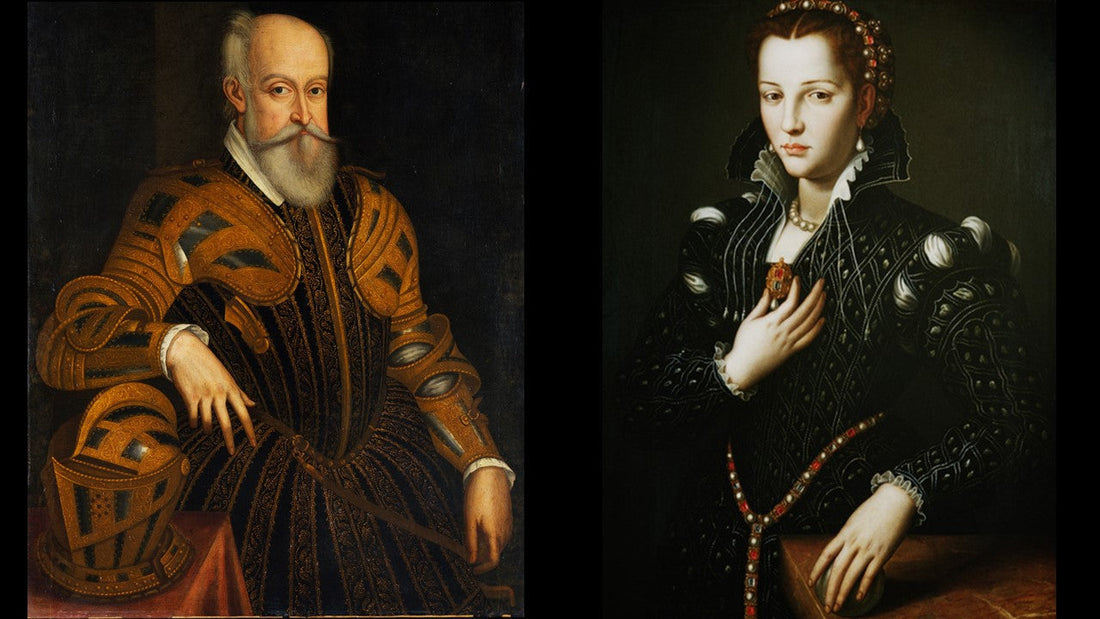
My Last Duchess
Jason PerinbamShare
Struggling to analyse My Last Duchess for your GCSE Power and Conflict poetry? This breakdown will help you understand how Browning uses dramatic monologue to explore themes of power, pride, control—and the sinister side of aristocracy. Want full notes, 50+ high-level quotes, and Grade 9 model essays? Grab our Power & Conflict Poetry Cheat Sheet—available now on the Products Page!
Why Is My Last Duchess So Important?
Robert Browning wrote My Last Duchess to expose the toxic power dynamics in elite, patriarchal societies. Through the Duke’s dramatic monologue, we learn how pride, jealousy, and a thirst for control can become deadly.
- On the surface, it’s about a painting.
- Underneath? A confession of emotional manipulation and possible murder.
Set in Renaissance Italy, the poem is based on the real Duke of Ferrara, who may have poisoned his wife. Browning gives us a chilling look into the psychology of entitlement and abuse.
Browning’s Message on Power and Control
Browning uses the character of the Duke to show how power—especially when tied to gender and class—can become corrupt. The Duke doesn’t just want love or loyalty; he wants complete domination.
Key ideas:
- Patriarchal control over women
- Obsession with reputation and appearance
- Emotional repression and entitlement
- Class-based power (he sees women as possessions)
The poem becomes a warning: when power goes unchecked, it can become destructive—even murderous.
Who Is the Duke?
The Duke is arrogant, obsessive, and chillingly calm as he discusses his “last Duchess.” Browning lets the Duke expose himself through his own words.
We learn that:
- He couldn’t tolerate her friendliness or independence
- He gave “commands” and “all smiles stopped” (implying he had her killed)
- He sees women and art as objects to be controlled
- “That’s my last Duchess painted on the wall, / Looking as if she were alive.”
This opening line sets the tone—she’s now just a possession on display.
Context: What Inspired Browning?
- Published in 1842, My Last Duchess reflects Victorian concerns about power, marriage, and control
- Inspired by Alfonso II, Duke of Ferrara, whose wife died under suspicious circumstances
- Browning critiques class privilege and toxic masculinity through the Duke’s arrogance
- The poem reflects 19th-century anxieties about women’s roles and independence
High-Level Vocabulary to Use in Your Essays
- Patriarchal – Male-dominated; reflecting traditional gender roles
- Possessive – Wanting ownership or control
- Egotistical – Self-centred or proud
- Sinister – Suggesting evil or malice
- Dramatic irony – When the audience sees more than the character realises
- Dramatic monologue – A one-sided speech revealing inner thoughts
- Psychological control – Manipulation of thoughts and behaviour
- Objectification – Treating a person like a possession
3 Key Quotes + Analysis
1. “I gave commands; / Then all smiles stopped together.”
- Analysis: Cold and ambiguous. The euphemism for her death shows his emotional detachment and controlling nature. Browning forces us to infer the truth—creating tension and horror.
2. “Too easily impressed; she liked whate’er / She looked on, and her looks went everywhere.”
- Analysis: The Duke resents her for being warm and friendly to others. His jealousy reveals his insecurity and obsession with status. He expects total admiration.
3. “Notice Neptune, though, / Taming a sea-horse, thought a rarity.”
- Analysis: He compares himself to a god “taming” a delicate creature—reinforcing his need for dominance. The metaphor dehumanises the Duchess and symbolises male control over women.
Want Full Notes, Grade 9 Essays & More Quotes?
This is just one part of our Power and Conflict Poetry Cheat Sheet, which includes:
✅ Full poem breakdowns for Ozymandias, Kamikaze, My Last Duchess, and more
✅ Side-by-side comparisons (e.g. Ozymandias vs My Last Duchess)
✅ Grade 9 model answers with examiner-style annotations
✅ 50+ high-level quotes with advanced analysis
✅ Context, structure, and language tips for every poem
🚀 Upgrade your revision now—download the full guide!
P.S. Struggling with analysis or quotes? Our text-specific cheat sheets break down An Inspector Calls, A Christmas Carol, and more into Grade 9-ready notes.
Why JP Tutors Hub?
Founded by a grade-9 student, our resources are:
✨ Exam-board aligned
✨ Used by thousands of GCSE students
✨ Designed to save you time and boost marks
Follow us for more free tips—or visit our shop to upgrade your revision! 🚀